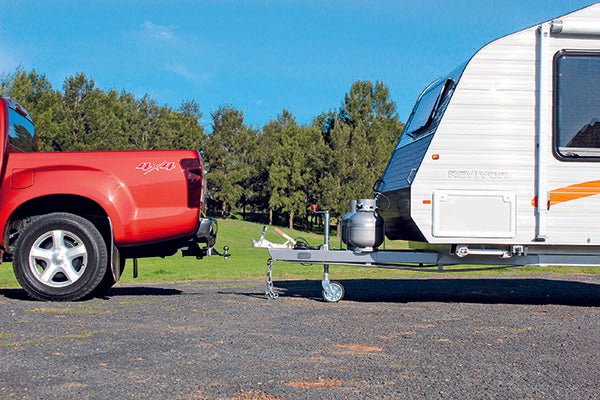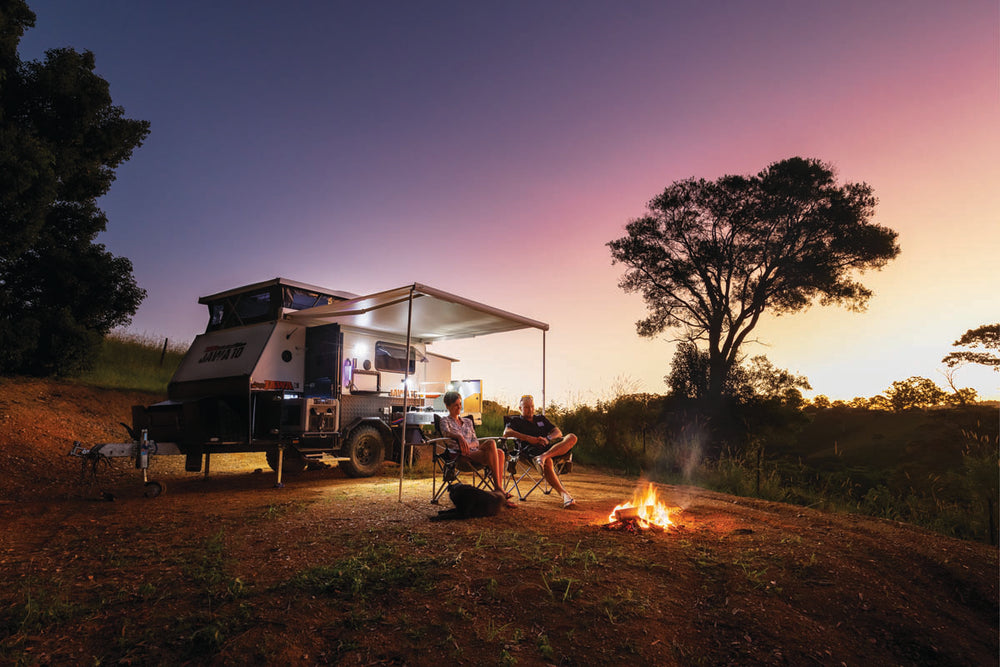Which Hitch Is Best For You?

The dream of hitching up a caravan and exploring the open road is an achievable one – all you have to do is hitch up the van. The trouble is, with a seemingly endless array of caravan hitches and accessories available, it’s difficult to know which hitch is best for your caravan.
Thankfully, there’s a good number of Australian-made hitches to choose from these days, including Vehicle Components, Trigg Bros., Hitch-Ezy, Treg and others.
Stephen Trigg of Trigg Bros., said, when it comes to selecting a hitch, while it’s best to trust your caravan manufacturer, his advice would be to always buy Australian-made.
Australian-made hitch manufacturer Vehicle Components boss Chris Goddard said the difference between hitches is largely directed by Australian Design Regulations, which dictate how they are fitted and other aspects of the coupling. He said these regulations influence the use and technical standards that relate to every hitch from basic 50mm ball hitches through to more sophisticated couplings.
STANDARD 50MM BALL COUPLING
Standard ball couplings are still a popular sight on many modern caravans, particularly the smaller or lighter weight ones. There are numerous ball style hitches available these days and the Trig 50mm Star Nut and Plunger are popular examples.
However, Goddard said that the design standards mean that when a car-caravan combo hitches outside a certain height range, you must use a coupling other than a standard 50mm ball hitch. That sort of combo might include a large 4WD hitched to an offroad caravan with plenty of ground clearance. The ball coupling height range is set so that the height at the centre of the ball is between 350mm and 420mm from the ground when laden.
OTHER COUPLINGS
According to Australian Standards, any coupling that is not a 50mm ball is called an ‘other coupling.’ It’s an uninspiring term that means a coupling that doesn’t have any ball height requirements.
“If you are going to be safe and be clear of any legislation, if you have an offroad caravan, for instance, you want a coupling that isn’t a 50mm ball,” Goddard said.
VEHICLE COMPONENTS
That is why hitch manufacturers have developed hitches without a ball, such as Vehicle Components’ DO35 or DO45. Goddard says offroad hitches have become the standard for offroad caravans and they are rapidly replacing the 50mm ball hitch, even for highway touring caravans. That’s because this style of caravan hitch usually has locking mechanisms that are easy to engage and they typically have a great range of movement that allows them to articulate freely. This means, Goddard explained, that if a caravan rolls, you have a much better chance of the caravan being able to spin freely of the car with only safety chains and, perhaps, weight distribution hitches becoming involved.
But that’s not the end of the hitch story. For those with caravans that weigh in above 3.5t, the regulations, in terms of testing requirements, change. They have to be fatigue-tested which is, arguably, a bonus for caravanners. In effect, it means greater peace of mind for hitches rated for higher weights.
Vehicle Components has developed non-ball couplings that now have no removable pin. “That’s because, with a removable pin, you can drop it and lose it, which is very embarrassing if you happen to be on soft sand up at Weipa or somewhere similar,” Goddard said. VC also engineers couplings that ‘drop on’ so if you were offroad, it’s easy to drop the hitch on as it self-locates, making it easier to line up when you’re not in a position to line up perfectly with the caravan hitch.
TREG
The Treg Polyblock is another common hitch that also boasts 360° rotation and an ability to absorb and dampen vibration making it a worthwhile consideration as an offroad hitch.
HITCH-EZY
Hitch-Ezy is another popular hitch. Hitch-Ezy offers similar products to Vehicle Components that differentiate themselves on the variety of features or accessories offered. For example, the Hitch-Ezy boasts a key that holds the rotating lid in the open position so you have both hands free to work a stiff jockey wheel.
Hitch-Ezy’s John Allsop said the key also keeps the vanner’s hands well away, should the trailer roll towards or away from the towing vehicle on uncoupling. “What’s more, there is a transverse hole in the bottom of the secondary-locking button’s support that accepts a padlock to secure a dummy tow-pillar inside the coupling and thereby preclude anyone connecting to the coupling,” Allsop said. This helps make the caravan theft proof.
Vehicle Components solves the problem of the potential for caravan theft with a padlock hole.
CHOOSING THE RIGHT HITCH
Glen Jocumsen from RoadCraft tow education said you need to be clear about what sort of travel you are likely to do in order to choose the right hitch for that purpose.
It’s also worth remembering that you’re not comparing apples with apples when it comes to hitches, as a standard 50mm pressed metal towball hitch will cost around $50 while a 3.5t offroad system will set you back around $400.
WEIGHT DISTRIBUTION HITCH
There is more to hitching than 50mm ball couplings and offroad hitches. Weight distribution hitches (WDH) link the caravan to the tow vehicle in combination with the coupling device to improve the towability of a caravan by helping share the load between the caravan and the tow vehicle.
A WDH is most commonly used for long or heavy caravans. Kedron Caravans director Glen Gall explained that a heavy towball weight can take the weight off the front wheels of the vehicle and that can affect your steering and your brakes. “So a WDH is used to transfer some of the load off the back of the vehicle back on to the front,” he said.
Gall said the idea of the WDH is to return the gap between the top of the tow vehicle’s front tyres and the guard as close to what it would have been as if the caravan was not coupled to the vehicle.
However, Hitch-Ezy’s John Allsop said caravan owners should be cautious about using WDHs. “The articulation between car and trailer does not occur directly above the towball mount hole on the towbar. Instead there is a rigid extension behind the towball mount hole to an articulation such as a universal joint.” That means the cantilevering action of WDH increases stresses on the towbar and the towbar’s attachments to the towing vehicle. More work needs to be done to better solve the problem of large towball weights impacting on the ability to brake and steer the tow vehicle, Allsop said.
Tow educator Glen Jocumsen agreed that caravanners need to be cautious of WDHs and recommends vanners speak to their caravan supplier and tow vehicle manufacturer before using a WDH. “If your tow vehicle doesn’t have a full-length chassis rail, you can actually bend the car in the middle,” he said.
The full article appears in Caravan World #555 September 2016. Subscribe today for the latest caravan reviews and news every month!







